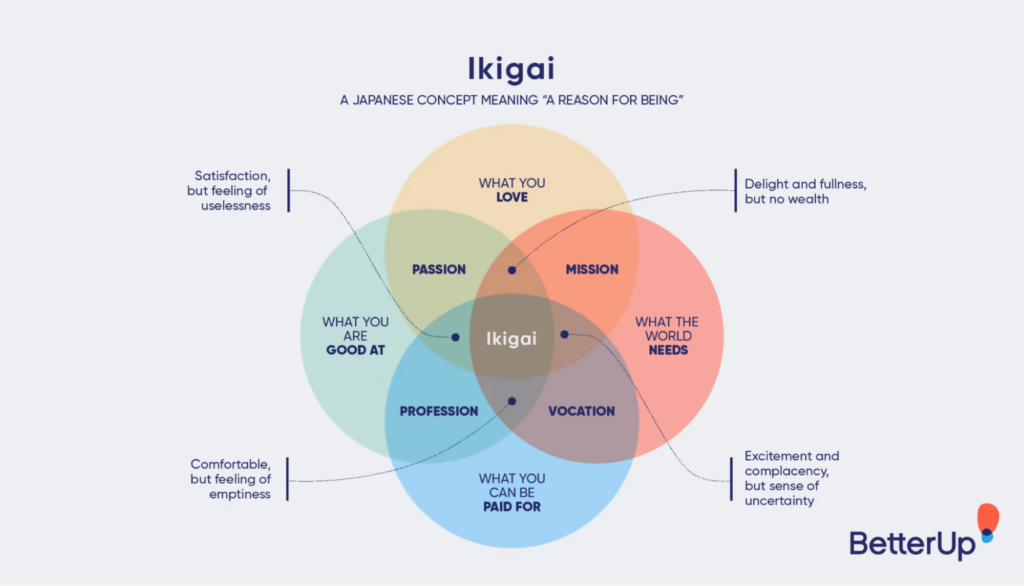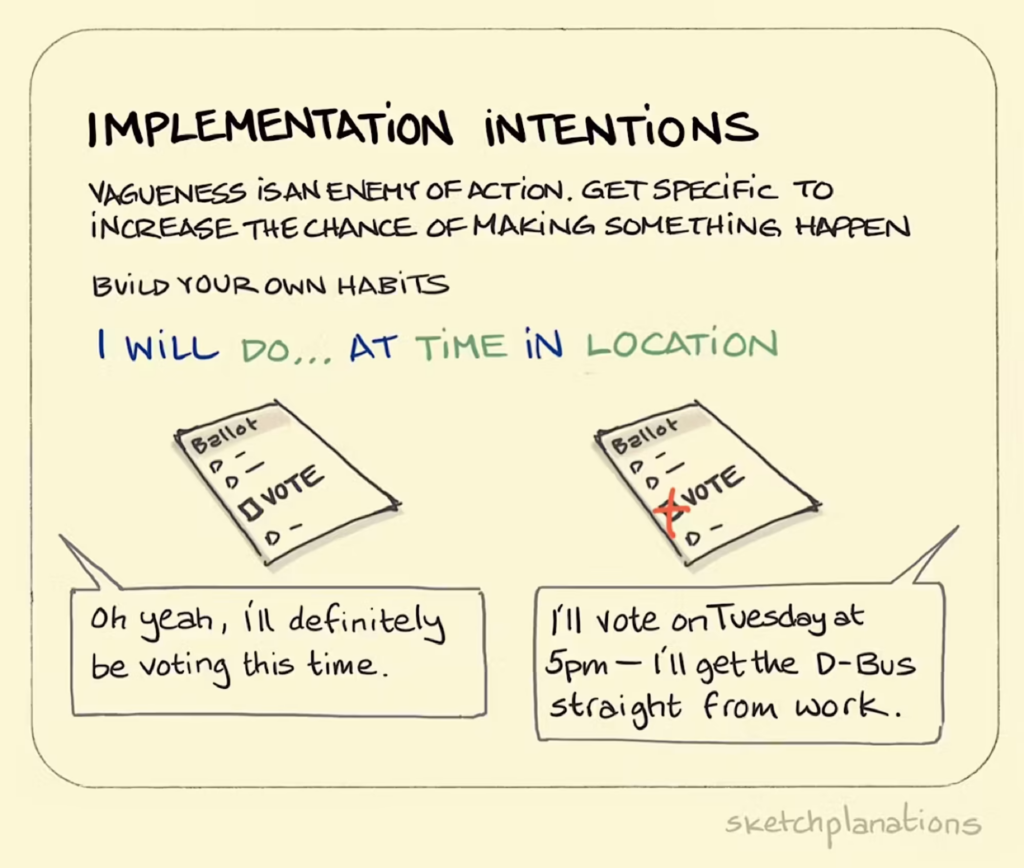Joy is pure happiness, looking at your child, getting a surprise birthday party, visiting a family member after a long time, or visiting a scenic route. It is the most pleasurable feeling you can ever get.
Socrates established two points about happiness (joy):
- Happiness is what all people desire: since it is always the end (goal) of our activities, it is an unconditional good.
- Happiness does not depend on external things but rather on how those things are used.
Designers forge experiences based on many parameters set by businesses but often forget the happiness gained by indulging in the creation process, and that is the second point Socrates mentioned. So, if there is no joy, the designers must rediscover themselves.
The path to rediscovery starts with being mindful, introspective, and forward-looking. It will help designers evaluate where they lack and cover those bases to be better at their craft. They also have to keep in mind the level of control they have over the designs, especially with business inputs, technical constraints, and aspects beyond their control. The desired outcome could be completely different than their imagination. However, designers need to find solace in such cases. Otherwise, it would have a detrimental effect on their career, like losing interest or feeling lost.
“Find joy in everything you choose to do. Every job, relationship, home… it is your responsibility to love it or change it.”
— Chuck Palahniuk (American Novelist)
Designers need to develop and sharpen their temperament to be successful in their jobs. The goal is to solve user problems. It can be achieved by meditating on being happy irrespective of the outcome. It will help them be more satisfied with their work. Happiness is an intrinsic satisfaction of the outcome, so it is very subjective. The set of principles below is the foundation of rediscovering the joy of design.
Principle 1: Purpose
Viktor Frankl, an Austrian neurologist and psychologist, was a holocaust survivor from a Nazi concentration camp. In his gruesome experience, he observed that people with a higher sense of purpose survived anything thrown at them. They were far more resilient than others. It is difficult for us all to even comprehend what happened to the survivors when they were there. However, the will to fight back, a purpose driving them to look beyond, mattered the most.
“A stable and generalized intention to accomplish something that is at once meaningful to the self and of consequence to the world beyond the self.”
— Stanford psychologist William Damon and colleagues
A purpose is the core principle. It is the reason why someone becomes a designer. It is not a destination but a path. A designer will fail, get constructive feedback, carry a different opinion, encounter business recommendations and pivots, or might be pulled off projects, but those are short-term setbacks for a purpose-led designer. Their purpose drives them irrespective of these setbacks. These problems do not bother them, and they do not start questioning their choices. Rather, they learn and move on to the next challenge.
A purpose-led design is guided by what drives the designer. An actualized purpose-led designer will not be discouraged while getting negative/constructive feedback, annoyed with no stakeholder buy-in, or demoralized that a design was not as successful.
The purpose is a designer’s Northstar if they are in any despicable situation.
Even in a situation where they lose their job, their purpose will motivate them against all odds to apply for jobs. Being unemployed is just a phase for them that will pass.
I was laid off from my previous job, but my purpose motivated me to apply to hundreds of jobs, and I came out with an offer on the last day before my visa expired (a story by itself, which you can read here). If I had succumbed to the situation, it would have been a devastating blow to my life in the U.S. But I could stay motivated and focused because of my purpose.
The way I discovered my purpose was by using the Japanese philosophy of Ikigai. Having a clear sense of direction gives profound energy to continue the pursuit irrespective of any roadblocks.

Source: BetterUp. (Large preview)
Burnout usually happens when there is exhaustion from performing an activity that has now become mundane. If the designer has a purpose, these hurdles will not cause chaos but learning opportunities, and they will seek a way to move forward.
Joy is the result of such a positive outlook towards any setback. It is a sense of achievement, learning, and thriving against all odds to improve and be better in their passionate pursuits. It is the result of a positive temperament in a difficult situation that the designer overcomes. Joy would help them move along the path where others usually give up or fail. Asking for help is also a strength and not a weakness, as many think. It shows courage and acknowledgment that there is room for improvement. Look for a mentor who would help without judgment.
“Only when the emotions work in terms of values can the individual feel pure joy.“
— Viktor Frankl
Planning goals gives a designer a good sense of their work. Most of this work is focused on deliverables that can be quantified. Whenever a designer delivers a critical asset, such as UI design, icons, or a strategy brief, it is always targeted toward that goal.
The purpose is more qualitative, and it needs to be cultivated over time. It cannot be quantified by achievements. As a designer, there is a need to look inward and be more focused on that intrinsic feeling. It is the spark that ignites the reason for becoming a designer — ikigai. Ask yourself, Why do I want to be a designer? Why am I still designing? Find that genuine feeling. It does not need to be smart or unique, but it has to be genuine. That feeling is the purpose.
Principle 2: Devotion
Devotion is the presence of enthusiasm about any activity. As designers, the indulgence in creating products for users is of the highest significance. However, the way a problem is solved or the approach to finding a solution differs and is based on that designer’s devotion towards their users. Devotion is attained when a designer has achieved a sense of responsibility towards users and is emotionally involved in solving the problem, as that is all they enjoy doing.
An argument could be made that, as designers, they should not be attached to what they create, which is true. However, there is a difference between emotional involvement and attachment that a designer needs to identify themselves. However, to understand devotion, first, we need to understand passion.
An uncontrollable emotional drive and immense dedication to the work to design products that delight users is passion. A designer must have this passion and dedicate their time to creating experiences. However, there is a duality to passion: harmony and obsession.
Obsessive passion usually poses a negative effect. It is an unreasonable or rather excessive degree of involvement that could very quickly become unhealthy. This obsessive, passionate behavior controls them with rigid, persistent results that lead to less optimal performance. Due to this, designers barely scratch the surface of user needs and tend to avoid digging deeper to uncover problems. The design then becomes patchwork.
A designer who constantly seeks only results and is purely focused on a problem to solve it is showing shades of obsession. Surely, they, too, enjoy the design; however, they are not in control. It forces them not to focus on the process but on the result. If the expected results are not achieved, it leads to frustration, reflected in other parts of their life. There are plenty of articles out there talking about obsession in the design field. However, I would argue they actually meant harmonious passion.
Harmonious passion usually occurs when designers freely accept and internalize the process as an essential part of their lives. Even if a business does not match design expectations, it does not matter as the designer can still process and internalize it because they are so passionate about it. They are aware of the level of control they possess, giving them the ability to be harmonious. Harmonious passion motivates them to innovate and involve themselves in solving user problems. They could attain the state of the zone rather quickly because they have an intrinsic need and motivation to design successful products under any constraints. It automatically creates harmony in their work-life balance.
If you spot a designer who looks for inspiration in all things around and constantly wants to improve their skill set, they are a harmonious designer. Even when in a challenging situation, they find all the motivation they need internally to complete it. It drives them and gives purpose to their work. Harmonious passion is a pathway to devotion towards their craft.
A devoted designer will always find ways to fulfill user expectations. It is an unimaginable internal force that helps them pursue anything and everything possible against all odds:
- To cultivate this drive,
- Get involved in the process thoroughly,
- Ask the right questions,
- Empathize with users,
- Understand what they truly want, and
- Find the balance between business and users.
It is not easy, but this devoted, passionate behavior would allow designers to be the best at their work. At the end of the day, they will feel much more joyous. Designers who find joy in devotion are much more focused in their efforts to make their users’ lives easier. Devotion could also be interpreted as unconditional love. If you love something, then no matter what happens, you will always find a way to do it: finding opportunities after a job loss, making opportunities by convincing teams, indulging in the details to help a business grow, and so on.
Military forces are one of the best examples of devotion; they are ready to die for their country without giving it as much of a second thought. Now, designers do not need to go that far, but it should be paramount to devote all the energy to users and help them. If the devotion is wholehearted, it will result in joy for designers as they design products.
Principle 3: Ideals
Ideals are a set of values that we all want to achieve. These values are imaginative but highly desirable and need intrinsic motivation to actualize them. According to Plato, a world in your mind exists that has everything precisely the way that specific individual wants. In this ideal world, one can be the self they genuinely desire; that is their reality.
When we hear the phrase “In an ideal world…”, we usually refer to that imaginary world where everything goes according to a plan. Ideals are being the best self. To be this best self, bringing ideals to reality and following them as set rules will help individuals be the ideal self that lives in their mind in this physical plane.
Ian Goodfellow was the machine learning director at Apple. He left the company because the company’s ideals did not match his. Ian believed being flexible would have been the best policy for him and his teammates. He disagreed with the in-person work Apple wanted their employees to do, so he quit and joined Google, which supported him.
As a designer, in their ideal world, they could be ethical or methodical. Only they can decide to reflect those ideals in this reality; that choice lies with them. If they do bring it to this reality and these ideals do not align with someone or a company, it becomes difficult for them to sustain themselves in that environment, making it toxic, and eventually, they quit.
Designers need to start by identifying ideals and live by them. For example, ensuring to be honest with users by not supporting deceptive patterns. Following their ideals, designers need to be particular in abiding by them. These ideals will help them be closer to their ideal self and stay true to their nature. However, they also need to find a way to accept the ideals of other co-workers and be a bit malleable, but not to an extent where the compromises far exceed acceptance.
Designers should choose the ideals they absolutely cannot compromise and create a list of importance. Using this list, the designer can choose what is acceptable and unacceptable. For example, they might need to forgo innovation at the go-to-market cost. In this case, if it is unacceptable, then the designer has a choice to look for a project that is innovative first. The compromises they make have to be negotiable.
Imagine a designer has to discuss an experience with stakeholders; the expected experience will cause a lot of friction with the users. After multiple discussions, the designs are implemented based on business guidelines. This will make the designer think as much as business is critical, meeting the user’s expectation is critical too. In such cases, it depends on every individual designer — the threshold of their trade of acceptance. Designers can achieve joy only if their ideals have a place to flourish. If there is no joy, designers will lose interest in the work quickly. Joy is what keeps them motivated and helps them strive to deliver the best experiences.
Principle 4: Intention
Cetana is a Buddhist term having its roots in Sanskrit for intention. This intention could be positive or negative, defining your attitude towards the plan for achieving the goal. An ethical action needs to match the designer’s ideals. If it does not, it creates friction with their intentions. Without a proper intention, an action most likely becomes mechanical, making it mundane, such as logging into your laptop, opening Slack, and so on. According to a Sri Lankan Buddhist scholar, David J. Kalupahana, unconscious intentions are these mundane actions. On the flip side, a conscious intention is explicitly chosen.
Emotional involvement is crucial in a conscious intention. Combining emotion and intention makes it more affordable, allowing the actions to be perceived as simpler. Imagine an intent to build a product that is highly intuitive for users. It would make it easier to break complex tasks into smaller chunks that still uphold that intention.
Psychologists Martin Fishbein and Icek Ajzen propose a theory of reasoned actions. This theory suggests that a person’s intention to be engaged in a particular behavior can help predict whether or not that behavior is genuine. If the intention is not honest, it will reflect in action. A genuine intention could be goal-oriented or implementation-oriented. Goal-oriented intentions are what someone needs to do to achieve it.
For example, I want to gain the best visual design skills. It helps define the goal and the steps to achieve it follows. An implementation intention is based on conditions “if-then.” If I practice UI design patterns, then I will become a better visual designer.

Source: Implementation Intentions. (Large preview)
As a designer, the intention should always be to solve user problems, and the actions should always follow the ideals. It does not matter even if the requirements are different than imagined; the intention should always focus on delivering a great product under any constraints. It creates a great synergy to produce designs that the designer can be proud of and feel the joy of creation.
Implementation or goal-intention can be tactfully applied to the work. The goal-intention should be focused on the more significant idea, for example, epics or the entire project. At the same time, implementation intentions could be focused on the smaller aspects of design, like user stories or individual screens. It would benefit designers to set an intention framework. This framework could be unsaid but mostly focused on the bigger goal that needs to be achieved.
Also, always remember to abide by the ideals before taking action. Otherwise, spiraling down is easy. Designers with ethical and ideal intentions will bring more happiness because it aligns with the pursuit of their achievements. As much as we want a successful result, an intention would allow designers to enjoy the process. It would allow them to consistently work with teams, identify the best solutions, and deliver. If the intentions are genuine, then it would not matter if the preference of design was influenced by any factors out of the designer’s control. It would just mean more challenges to overcome. If the designer is passionate and devoted, it would make their job far easier and joyous.
Principle 5: Gratitude
Gratitude is a reward for the one who is giving and the one who receives. It is a heartfelt, positive emotional reaction to the outcome. Thanking teammates or managers for excellent design feedback and showing appreciation to a design colleague who covered someone’s absence.
“Gratitude is a sense of thankfulness and happiness in response to receiving a gift, either a tangible benefit (e.g., a present, favor) given by someone or a fortunate happenstance (e.g., a beautiful day).“
Gratitude can be behavioral or personality. When thanking someone for their time, it is behavioral gratitude, while being thankful for anything and everything around you is personality. It can be cultivated and developed to be more joyful about designs, meetings, colleagues, company, and life.
Life is beautiful and worth living, and acknowledging goodness and appreciating feelings is the first step. Gratitude is more selfless; it is looking beyond self and recognizing the help others provide to you. As a designer, if someone gives valuable feedback that would alter the entire experience and make it graceful, give them some gratitude and thank them for their time.
Gratitude comes in all shapes and sizes. Be thankful for being in the field of choice (many in the world do not get to do what they enjoy the most), and be appreciative of the knowledge gained from the previous job (it is because of that organization that a designer gains experience for the next endeavor, so be grateful to the opportunity and move on to the next challenge), and so many more. Being grateful is a positive emotion that is contagious. It spreads rapidly because, in the end, the emotional burst is always joyful and pleasant. Many cultures celebrate gratefulness in various regional ways, but the one we all can distinctly remember is Thanksgiving.
A mindset is required to develop and cultivate this emotion. It starts with an acknowledgment: a beautiful day, a neighbor giving a morning bagel, or one of your colleagues recognizes and holds the elevator door. Acknowledge that these acts of kindness can be reciprocated by appreciating them. A simple “thank you” might suffice. It is a positive emotion that is associated with great physical and psychological health. The positive effects of gratitude are boundless and can be explored by anyone who is willing to make that effort. At the end of the day, we all want to feel joyful.
Design is highly exhausting and taxing, so give yourself some grace. Be happy in the work and appreciative of all that is achieved.
Designing is highly collaborative, which makes gratitude a key emotion.
Each achievement is shared within the team, so be thankful for their effort to actualize the design. It is a team effort to build experience. Acknowledging and recognizing the work the team has done would build trust, and the team will reciprocate it multifold. Gratitude is an emotion not every designer has. To cultivate it is a need for their professional life, heck, their personal life as well.
Conclusion
Joy makes us feel blissful. It gives us the energy to get up every morning and perform every action with a smile. It is one of the driving forces that get us going daily without complaint. Seek joy in everything you do, and it will not only reduce anxiety and stress but also elevate your life.
True joy is limitless and can be achieved by indulging in all the activities that bring you that happiness. Ingred Fetell Lee, the author of Joyful, says that “everything we interact with has a surprising effect on our mood; it is important that we harness the power of our surroundings to be more joyful.”
If there is a passion for the profession, the work experience is surreal and gives joy. This joy is about wins and opportunities to learn and grow. The way joy can be felt and achieved is not necessarily limited to the above-mentioned principles. It needs personal effort and motivation to seek it — something that is unique to every individual — so find what brings you joy and do it. Sometimes, things are not in your control. Do not worry about it. Worry only about things that you can change. Focus on it wholeheartedly, and it will eventually bring joy.
As designers, we devote energy to everything design. Live, breathe design — read articles, magazines, and new methods — and stay updated. Drive to be more purposeful in all your efforts. A purpose should drive all the actions, and this purpose should be a positive reinforcement for delivering excellent quality work.
Set some rules that should motivate you to be a better designer, not just for yourself but for the world around you. Make the correct choices in life, and be more intentional about the work. Passionate efforts never go unnoticed. Detach from the designs, be more critical about the path and choices, and only keep the goal in mind — everything else is an illusion of choice. Most of all, be thankful for what you have and what others do to help you achieve it.








